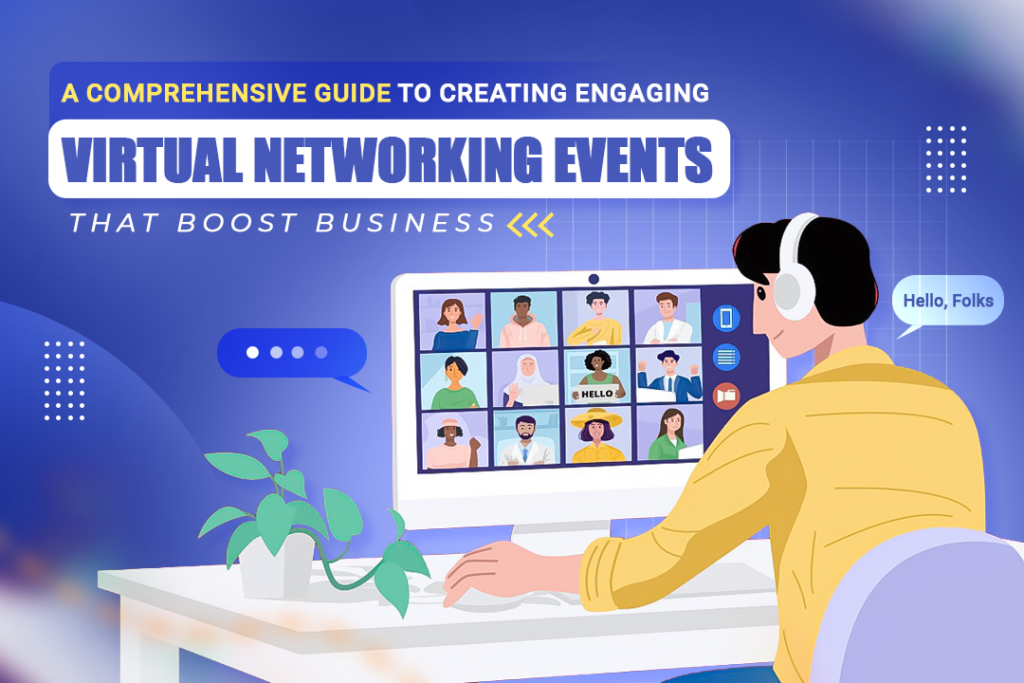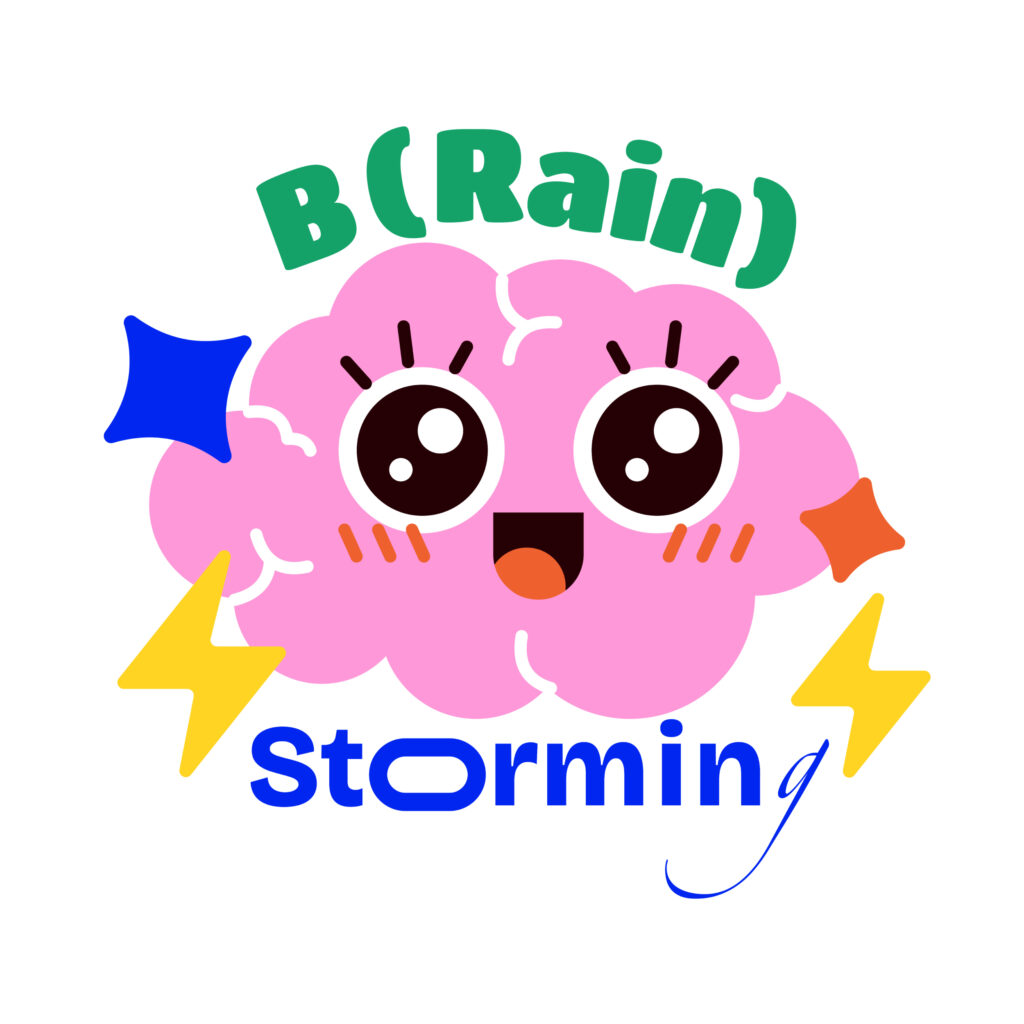
Since the pandemic, many conference attendees have preferred to network with experts worldwide without leaving their homes. This presents an exciting opportunity for event planners to meet the needs of these conference attendees and boost businesses by creating engaging virtual networking events. They’ve become exciting and productive spaces to network with experts worldwide without compromising attendees’ daily routines. Whether you want to grow your business or connect with people, virtual networking events are suitable spaces for everyone.
This blog will explore how you can create engaging virtual networking events that can deliver business success.
What Are Virtual Networking Events And How Is It Important?
Humans rely on socialization and networking to thrive personally and professionally. Virtual networking events tap into this drive by creating a virtual space where people can communicate, foster relationships, and network with like-minded people, regardless of physical location. These events are helpful for those who are willing to get insight from industry experts but are constrained by geographical differences.
Virtual networking events create intentional communal spaces where like-minded people can communicate with a common objective and shared interest. As Dominic Yates, CMO at SalesHookup, explains, “On a more advanced level, virtual networking is when you take advantage of video platforms such as Zoom or Teams to connect with people of interest across the world without having to leave your house or office to attend the meeting.”
The importance of virtual networking events can be seen in its growing applications in different B2B events, as highlighted by Prathamesh Sakmal, SEO Executive at Precedence Research; the virtual event platform market has grown significantly due to the rise in digital solutions for hosting events, conferences, and exhibitions. “These platforms offer flexibility and scalability, enabling audience engagement through live streaming, interactive Q&A sessions, #virtualnetworking, and data analytics,” he said.
This shows that virtual networking events are becoming increasingly relevant. Cross-country collaboration is required among experts to discuss important topics and share knowledge. These events facilitate easy networking among like-minded individuals who wouldn’t have otherwise collaborated if it wasn’t for virtual networking events.
How To Create Engaging Virtual Networking Events That Boost Business?
Let’s first explore a step-by-step guide on how you, as an event organizer, can create engaging virtual networking events that boost business.
1. Set Your Goals
As an event planner, you must have a specific and well-defined goal for your virtual networking event. You can be a dutiful host for your virtual attendees or position your organization’s brand in front of your audience or potential clients. Whatever choice you make should answer the question of what you are trying to accomplish with the event; it can be to promote a product or service, nurture business relationships, foster collaboration, or something else.

Ensure your event goals are specific so that it is easier to measure your event’s efficiency and success rate during and after the event. Align your event goals with the audience’s interests and objectives to achieve the best results.
2. Define Your Budget
Start by allocating funds for event marketing, which includes expenses for social media advertising, email marketing campaigns, content creation, and potential collaborations with influencers or industry partners to maximize visibility. If you plan to include panelists, keynote speakers, or industry experts, account for any costs or honoraria related to their valuable involvement. Allocate funds for content creation, covering expenses for video production, graphics, and slide design to enhance the overall presentation quality.
Ensure that your budget accounts for the necessary technical equipment and services. You must include a reliable high-speed internet connection, audio and video equipment, proper lighting, and the potential hiring of technical support or AV professionals to guarantee a seamless virtual experience. Lastly, allocate funds for post-event activities, including sending follow-up emails, analyzing event analytics, conducting participant surveys, and assessing the event’s overall success.
3. Design Your Virtual Networking Event
Once you’ve set your event goals, you can design your virtual networking event. Start from the basics, like event format, date and time, and duration, and create an outline for the entire event.
Consider your event’s purpose and audience’s interests while creating a useful and engaging virtual networking event. When choosing a website host and A/V equipment, consider your event budget and align it with your event requirements.
Similarly, your choice of finding a suitable virtual networking event platform to host the entire event also impacts your virtual event planning. For example, your decision to plan a brainstorming video session with experts or a speed networking event will affect your event budget and technical requirements. By syncing your virtual networking event design with your event plan, you can achieve maximum efficiency and deliver an engaging event experience.
4. Pick an Engaging Virtual Networking Event Platform
Choosing an engaging virtual networking platform is crucial to ensuring that your attendees can interact and communicate in a fun way. The best virtual networking event platform makes attendees feel like they are in a physical event.
Your choice of an appropriate virtual networking event platform depends on the type of event you are planning. For instance, casual networking of corporate professionals would only need a simple Zoom call. Still, for an extensive virtual networking event with a large audience, you need specialized virtual event platforms.

These event tools can virtually create an exact physical event with all its processes and intricacies, immersing and engaging your attendees. To promote further engagement among your attendees, you can choose virtual event platforms that support virtual interactive activities like avatars, integrated gamification, sharing of resources, and project collaboration.
As Mahesh Reddy, Founder of DataSearch.Pro suggests, “Technology has transformed how we build and maintain professional relationships. From LinkedIn connections to virtual meetings on Zoom, networking has never been more accessible, global, and efficient.” This empowers event planners like you to leverage various technological advancements to choose an engaging virtual event platform.
5. Build Your Guest List
An engaging and fruitful virtual networking event needs an impressive guest list. As such, your job as an event planner is to invite the right people at the right time. You can invite like-minded people by ensuring their backgrounds and interests align with your B2B virtual event’s objectives. By staying true to your event’s purpose of fostering networking and collaboration, you can attract audiences with that passion.
You can seek your potential audiences from social media channels like LinkedIn, X (formerly Twitter), or direct mail. Communicate your event’s purpose and objective in a straightforward way to keep your potential audience interested.
You can be more general in your invitations; however, for smaller audiences, you can use a more personalized tone. Vanessa Van Edwards from Science of People suggests that you build your guest list from your existing connections and people you already know, and you need this networking event for them to grow.
She emphasizes the benefits of having known people at your virtual networking event, which helps to personalize your event so that you can help them build their networks and facilitate business connections. She also highlights the value of the “reciprocity effect,” whereby helping your connections build better networks, they reciprocate by introducing you to their networks, thus fulfilling the crucial goal of any virtual networking event – mutually beneficial relationships.
6. Arrange a Fun Opening Session
As the event planner, you’re also responsible for hosting a fun opening session that will allow your attendees to get to know each other, their backgrounds, and interests. You can organize an opening session filled with fun virtual networking activities and an overall casual mood so that attendees can feel relaxed and be more open in their communication. By hosting a Mix n’ Mingle session, you can provide your attendees with a calm and party-like atmosphere filled with activities like about yourself, icebreakers, creative exercises, etc.

You can follow the advice of Joe Schwinger, co-founder and CEO of MeetingPlay, who recommends, “Capture your audience with a big bang at a virtual event and then give them a reason to come together again before your next meeting by building in micro-events. This will build your community through word-of-mouth and satisfy them until the next big gathering. We’re encouraging our clients to think about FOMO.” He further explains the need to create an appetite, similar to an on-site event, for your virtual audiences that can be met with your virtual networking event. This highlights the importance of opening your virtual networking event with a big, exciting session that attracts everyone’s attention. You can maintain that attention by delivering engaging content throughout the event.
7. Be an Active Host and Moderator
B2B online networking events might seem casual, thus allowing event planners to think they can sit back and relax. However, you must actively participate in your event, moderate conversations, and keep the flow moving.
You can be fully present and invested in crucial speaker sessions. After the presentation, you can initiate a quick Q&A session to allow attendees and speakers to mingle and create professional relationships.
As a moderator, you must allow every participant to convey their message without obstacles. Remind people of the duration of their presentation, and gather everyone before the session ends to discuss what has happened, deal with queries, and get your audience excited about the next session or event.
8. Pitch a Compelling Event Agenda
As an event planner and the primary host for the virtual event, you are responsible for delivering a clear-cut agenda for the event. Since the virtual networking event you’ve planned is focused on a specific purpose, you need to convert that message to your attendees at the beginning of the event. This way, you can clear any doubts or queries that might arise during the event.

During the introductory phase of your event, pitch a compelling event agenda that satisfies attendees’ curiosity and keeps them engaged throughout the event. Ensure your tone is informative and fun so you don’t devolve into a dull, monotone voice that kills the atmosphere. Additionally, your event agenda pitch should align with the event’s purpose previously conveyed during the pre-event marketing phase so that your attendees can relate to the event.
9. Provide Downloadable Resources and Materials
One of the most fruitful things you can do as an event planner to build your virtual networking event and keep your audiences engaged is to provide downloadable resources and materials related to your event. Equip attendees with reading materials to enhance readiness and engagement. You can share an event handbook, resources on virtual networking strategies, guidelines on delivering compelling pitches, etc. Moreover, you can facilitate your attendees’ interest in the event by providing them with background information on the speakers or sessions to promote engagement.
10. Use Quantitative Data
Collect quantitative data to measure the virtual event’s success. Track metrics such as the number of participants, session attendance rates, engagement rates in polls or chat features, and social media reach or impressions. You can analyze these metrics to assess the event’s reach, engagement levels, and overall participation.

These data will also help you personalize your virtual networking event for each attendee, enabling a more engaging experience. Moreover, proper quantitative data analysis, such as registration, social media, and event activity data, will help you measure your event ROI (return on investment).
11. Encourage Participants for Testimonials and Reviews
Encourage participants to provide testimonials or reviews about their experience with the virtual networking event. Request them to share their thoughts on social media platforms or through testimonials on your event webpage. Positive testimonials can serve as testimonials for future events and help promote the event to a broader audience engagement.
Collect feedback from the organizers and volunteers planning and executing the virtual networking event. They can provide valuable insights into logistical aspects, technical challenges, and the overall effectiveness of the event. Conduct post-event debrief sessions to gather their feedback and suggestions for improvement.
12. Collect Feedback and Evaluate Success
This process is vital for understanding its significance and identifying areas for improvement. You can create an online survey using platforms like Google Forms or SurveyMonkey. Design the study to capture participants’ overall satisfaction, perception of the event’s value, and feedback on networking opportunities, content relevance, and engagement activities. Allow participants to ask open-ended questions to gather qualitative feedback and suggestions for improvement.

37 Best Engaging Virtual Networking Event Ideas and Strategies
Now that we’ve understood the basics of virtual networking events let’s look at some engagement ideas and strategies that will make your event more successful and interactive. You can also read our 29 Dynamic Networking Event Ideas to Make a Lasting Impression article to get the best networking ideas for your in-person B2B event.
1. Conduct Icebreaker Activities
Incorporating icebreaker activities can help attendees feel calm and relaxed around unfamiliar faces. Icebreaker activities help attendees initiate conversations and make connections right away without feeling shy or constrained by the unfamiliar nature of the environment. Activities like trivia, name games, background challenges, and more help lighten the mood and allow attendees to get to know each other and their backgrounds and interests. Read our 30 Must-Try Team Building Activities For Large Groups article for more details on such activities.
2. Facilitate Multiple Modes of Networking
You can facilitate multiple means of connecting and networking with the attendees so that they can choose what they’re most comfortable with. These include video conferencing, live chats, virtual business cards, etc. Attendees can pick the medium that meets their needs: a chat, audio, or video session. They can even choose 1:1 sessions for in-depth conversations or group discussions for an extensive meeting.

You can also provide AI matchmaking features, allowing attendees to find and connect with like-minded individuals based on shared interests and backgrounds. New technologies like spatial connect, and VR technology use audio and video inputs to create a virtual space that reflects an appropriate environment based on the requirements of an interaction. With these tools, you can ensure that your attendees are comfortable communicating and networking with people, thus providing an engaging event.
3. Provide Virtual Social Lounges
Social lounges are virtual spaces characterized by their informal and casual environment. They’re places where attendees can gather to chat or mingle with other people before or after a session. These virtual social lounges are filled with fun activities that engage the attendees. These spaces are crucial in nurturing networks among attendees, as people can briefly know each other before/after the event without the formal pressure of the environment.
4. Create Proximity-based Networking Rooms
Engaging in virtual networking events mimics the natural flow of conversations from the physical world in the best way possible. This gives the impression to the audiences that they’re not missing out on a physical event.
One way to adopt this natural flow of communication and networking is to create proximity-based virtual networking rooms where attendees can move around their avatars in the virtual space. The proximity-based algorithm will automatically place nearby people in the same networking room. This allows attendees to meet random people, engage in conversations, and potentially build a professional network with them.
5. Offer Virtual Speed Networking
Speed networking is a crucial part of any virtual networking event. Its speedy and lightning-fast format makes attendees feel at ease and keeps it interesting. You can host a dedicated virtual speed networking event or add this as part of your event. The most exciting element is the time limit of each session, which is usually 2-5 minutes. This allows attendees to meet and connect within a short time, which proves to be effective and convenient.
6. Designate Interest Tags
7. Open a Pre-event Live Chat

8. Host an Open-Mic Session
An open mic session is one of the most fun virtual networking ideas you can make your attendees interact. You can host these sessions before the event to lighten the mood and to make every attendee known to each other. Inform your attendees to prepare a short pitch, such as poems, singing, showcasing their paintings, stand-up comedy, etc. These mini-acts will allow every event attendee to get invested in the event and help them make exciting connections with other attendees.
9. Have Expert Sessions
Expert sessions are the essence of your virtual networking event. Your event attendees will attend the session to connect with experts, and the best way to gauge the abilities of the experts is to host expert sessions. You can arrange a session where every expert can pitch what they have learned and the skills they’ve mastered.
For example, they can talk about their expertise in marketing, finance, or creating new software. Your choice of experts should align with your event purpose to maximize attendee engagement and boost business opportunities via networking.
10. Arrange for Virtual Meal Sharing
Hosting virtual meal sharing is an exciting way to make virtual networking events more engaging. Depending on the time of your session, you can hold this session during breakfast, lunch, or dinner. To organize a virtual meal-sharing session, you can meet with the event attendees and ask everyone to state what they’re eating and why they’ve chosen this meal. You can also facilitate sharing food coupons with attendees to make it more interesting.
11. Plan a Pre-event Photo Contest
A pre-event photo contest is the most practical way to get your attendees to interact and network with others. You can organize a session where attendees must share pictures related to a specific event theme. For example, if you’re hosting an IT event, you can ask your attendees to share their computing setup or some cool gadgets they’ve encountered.
Alternatively, you can ask attendees to share photos of their pets or anything else they find interesting. This activity will highlight each person’s interests and things they care about. There are various permutations of this activity, some of which include gathering all attendees and guessing who took a particular photo.
12. Host a GIF War in the Chatroom
Hosting a virtual networking event has some of its unique advantages that can’t be replicated in an in-person event. One of these advantages is the ability to host a GIF war in the chatroom. This is one of the most incredible virtual networking event ideas. You can host a live GIF war session where attendees can use their creativity to share GIFs reflecting their opinions. You can select a theme for the activity or let attendees play the game within the backdrop of the event theme.
13. Design a Panel Discussion Space
Panel discussions are essential for building valuable networks based on informative and in-depth discussions. This activity allows attendees to share their insights, experiences, knowledge, and leadership skills on relevant topics, allowing others to gain valuable insights and diverse perspectives.

Since it’s a discussion panel and not a debate, attendees can constructively engage in vital conversations that reach the depths of a particular topic, allowing them to know each other deeply. This eventually leads to solid networking among attendees.
14. Arrange a VIP Round Table Session
Alternate to the panel discussion, you can host an exclusive round-table session for VIPs. The key is to invite only people at the top of their fields, like business leaders, corporate executives, and acclaimed experts, to maintain the exclusivity of the session. This is to promote further connections among leaders who already have enough networks. These sessions help boost your organization’s credibility and goodwill in the long term.
15. Create Private Social Media Groups
A virtual networking event’s primary objective is facilitating networking among its attendees. Creating private social media groups specific to your event will allow attendees to interact among themselves in a controlled space dedicated to expanding knowledge about the event topic and making meaningful connections.
Attendees can share photos, write opinions about a particular session at your event, and engage in discussions in these private groups. You can host these private channels on LinkedIn, Facebook, X, WhatsApp, Instagram, etc. You are responsible for moderating the content of the private social media groups by ensuring that the conversations are limited to the event’s scope of discussion.
16. Implement Gamification
One of the perks of virtual networking events is the ability to incorporate gamification into your event. You can implement simple games spread throughout different sessions in your event. These games can be between different sessions, hosted in a break room, or added as a feature in the live chat room. According to G2 Learning Hub, 59% of event organizers use games to make their events fun and interactive. Gamification includes simple and entertaining games that are moderate but enough to keep the attendees engaged.

They can be polls, quizzes, competitive games, etc. The essential feature of scores and rewards keeps it interesting for the attendees, who can compete with other participants for rewards while engaging in conversations in an informal setting, thus promoting increased networking.
17. Host a Playlist-Sharing Activity
You can host a session where attendees can share their favorite playlists with others and play their favorite songs. You can encourage participants to play one or three songs from their favorite playlists/artists on platforms like Spotify or Apple Music. This session can be used to promote diversity by asking attendees to play songs from their culture.
You can organize this session after the event or between sessions for a lighthearted session of fun and entertainment. Moreover, attendees can also guess the song’s name or artist by listening to the songs. This allows attendees to network with other attendees with similar music tastes, thus facilitating yet another way to promote networking at your event.
18. Create a Matchmaking Activity
Another way to promote matchmaking is to use AI to connect people with similar interests. The AI algorithm will suggest connections between people based on their attendee profile, hobbies, preferences, and online activity. This will be a fantastic way to connect people with like-minded people and nurture connections.
19. Design Virtual Photo Booths
You can create a virtual photo booth where attendees can snap photos of themselves and their networks and share them on social media. This enables attendees to create memories of attending your event and solidify their presence. It also stands as social proof of your event’s success in bringing people together and nurturing effective networking that boosts business. This activity creates a fun and memorable atmosphere for attendees, where they can see their photos in a virtual gallery.
20. Arrange Live Forums
Live forums are an interactive way to engage attendees in thoughtful conversations and network with people with similar opinions on critical issues. You can organize a virtual live forum session with a theme related to the event and encourage attendees to ask questions and provide answers to each other in a controlled environment. This lets everyone learn each other’s strong points and also addresses everyone’s pain points in the event by raising queries.
21. Create Real-time Q&A Sessions
Real-time Q&A sessions are another exciting way to engage your attendees and encourage them to discuss the event topic. You can allot a dedicated session where attendees can present their doubts or questions to the speakers about their presentations.

This allows attendees to understand better what’s happening in the event and eliminate doubts. You can also encourage other attendees to answer questions their fellow attendees have just asked, which helps create bonds and trust among the attendees, thus facilitating healthy networking communities that can work together to boost business. You can read our article on 15 Tips That Guarantee A Productive Q&A Session to understand Q&A sessions better.
22. Plan One-on-One Sessions
Hosting a virtual networking event means ensuring the right people can interact and connect for business purposes. That means organizing one-on-one sessions where you can group two like-minded individuals to interact with each other.
You can suggest to attendees with whom they should interact one-on-one. It can be with people from different teams, or you can tell people with the skillset or experience you want to gain. Having a virtual networking event allows people to add their interests and achievements to their profiles, enabling you to get the data you can use to provide suggestions for networking.
23. Have a Live Polling Session
For example, you can give a polling question on the best strategies for generating new leads and provide multiple options. Then, you can ask everyone to rank the best strategy. The results can be shown after the polling, allowing everyone to discuss and network based on similar opinions.
24. Arrange Mini Hackathons
This activity is optimal for IT-related events, but it can applied to any virtual networking events that have attendees with technical backgrounds. You can provide a problem that needs to be solved and break everyone into groups to devise a solution. Offer clear instructions, required resources, and time limit to everyone and start the activity. Give a reward to the winning team that comes up with the most efficient solution within the time limit. This activity will allow everyone to work together, thus fostering a sense of community and teamwork, allowing people to interact and create virtual networking opportunities.
25. Host Fun and Engaging Workshops

26. Create Small Fireside Chats
In the B2B world, business leaders want to connect with people they can learn from or gain new insights. Therefore, to make your virtual networking event more engaging and valuable for business people, you can host a small virtual room for an intimate session with business leaders and niche experts in their fields. A small room size allows for more intense conversations and a storytelling session, allowing everyone to share their opinions more comfortably.
27. Design Self-led Sessions with Not More Than Six Participants
You can enhance your event’s engagement rate and boost business by converting any event topic into a virtual networking session by letting attendees host it themselves. You can provide different session topics and ask attendees to arrange and host a session from scratch based on each topic. They have to invite interested attendees and speakers and manage the session duration so it doesn’t clash with other sessions. Attendees can chat and connect in small groups, allowing deeper conversations and creating a successful business networking event.
28. Have Virtual Stage Interactions
Virtual stage interactions or on-stage interactions are among the best networking ideas. They promote networking and collaboration by allowing attendees to join speakers or hosts on the stage in real time. This will enable attendees to interact directly with the speakers, share their thoughts, and have meaningful conversations. It also facilitates easy networking for attendees with the hosts or speakers and provides the opportunity to pitch business ideas.
29. Create Customized Booths
Customized booths provide a platform for companies to showcase their products and their features to audiences in a visually appealing and interactive way. It’s a virtual alternative to trade shows, where you leverage the power of virtual networking events to highlight various features of the products and services in a visual projection. The customized booths allow attendees to interact with company representatives, learn about their products, services, and business models, and create business networking opportunities. To promote your business, you can further personalize your virtual booths with your organization’s brand logos and images.
30. Host Virtual Product Tours
Virtual product tours allow attendees to explore products in detail with guided tours, 360-degree views, and interactive presentations. You can provide virtual walkthroughs of the product and show all the details in a visually appealing way that intrigues your attendees. These product tours help attendees understand a product or service better and make informed business decisions through professional networking channels.
31. Create Live-Product Testing Sessions
If you’re planning a virtual product launch event, dedicate a session for live product testing for your attendees, stakeholders, customers, trusted patterns, and VIP members. This will allow your attendees to gain hands-on experience virtually from anywhere. You can send your attendees early access to new features to test and experiment with for a software launch event. For a hardware launch, you can directly deliver the product to their addresses so they can test it and give feedback. This creates an interactive experience and captivates attendees’ attention.
32. Provide Attendee Spotlight Activities
33. Facilitate Brainstorming Sessions
Acting as virtual conferences, brainstorming sessions are an excellent way to boost interaction and engagement among your attendees. These sessions emphasize collaboration, problem-solving, and critical thinking skills, allowing everyone to learn from each other. By incorporating these brainstorming sessions into your virtual networking event, you can promote creativity and innovative solutions and enable attendees to forge engaging business networks with others.

You can divide your attendees into groups and give them a problem. Then, ask the teams to devise practical solutions or strategies. This activity will encourage everyone to collaborate and brainstorm ideas about the issue while creating a bonding experience.
34. Arrange a Live Award Ceremony
Like any B2B event, your virtual networking event should also have an award ceremony to recognize the contributions and efforts of your attendees. For the various activities you organized to increase your attendees’ engagement and boost business networking, you put your attendees through challenging but fun tasks.
It is only standard for them to be rewarded for their efforts, so you can host a dedicated session to spotlight attendees who won specific games or tasks and provide them with an award. The award can be anything memorable and can be delivered to their addresses. This will show that, as the host, you care about your attendees and want to have a good rapport with them for future business opportunities.
35. Host a Virtual After-Party
After your successful virtual event, you can host a virtual after-party to cheer your attendees up. This can be done by asking attendees to dress up and drink cocktails or other beverages. An exciting thing about hosting a virtual networking event is that networking opportunities are available everywhere. Your attendees can use this after-party to engage in conversations with their networks or close important business deals in the backdrop of a fun party.
All these can happen naturally without you putting in any effort. Your primary job in this session is to make the virtual after-party session as realistic as possible by customizing backgrounds, playing smooth music, and letting attendees be themselves without any rules or instructions.
36. Send Follow-up Emails
You can send a thank you mail to your virtual attendees by showing gratitude for their attendance and engagement at your event. This will create a good impression on your attendees and allow you to have a good rapport with them for future business opportunities. You can take this one step further by including all the sessions, video recordings, and event resources so they can watch them later. Moreover, one exciting gesture that will help your attendees is to send them a neat spreadsheet of all the connections they made with all the contact details and other insights.
37. Promote your Future Event

You can ask your attendees to share screenshots or post about the event on their social media handles and provide a genuine review. This will help boost your brand awareness and create a good impression among your target audience. Collect and post your event’s positive reviews to inform everyone about its success.
Key Takeaway
One thing to remember when hosting a virtual networking event is that people are the center of the event. You can’t have a networking event without people. Therefore, your ultimate focus should be creating an environment that can mimic an in-person networking event as best as possible while leveraging as many technologies as likely to take advantage of the advantages of a virtual event.
In short, you must create an ecosystem where attendees can make valuable networks mutually beneficial to their businesses. You can implement these virtual networking event ideas and strategies to design an engaging, interactive event that promotes networking for growing companies.
You can use Eventible to gain insights into how attendees expect a virtual networking event to be. It has authentic B2B event reviews from actual attendees verified for validity. You can filter the reviews based on different event types to find the insight you need for your successful virtual networking event.




Comments are closed.